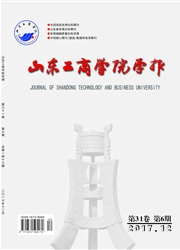

 中文摘要:
中文摘要:
论文根据2006年-2013年中国31个省市自治区的数据,利用Panel VAR模型来分析人口城镇化、经济城镇化和空间城镇化三者之间相互影响.实证分析结果表明:人口城镇化冲击对经济城镇化和空间城镇化影响表现为先负后正;经济城镇化冲击对人口城镇化影响表现为负向, 对空间城镇化影响表现为正向作用;空间城镇化冲击对人口城镇化影响表现为先正后负作用,对经济城镇化影响表现为正向作用.在东中西三大地区也呈现不同区域特征,这与城镇化发展阶段和经济发展水平相适应.整体上来说人口城镇化、经济城镇化和空间城镇化之间没有形成协调发 展,需要在推进城镇化过程中,需要立足于地区城镇化水平,提升小城市基础设施建设水平,建立城乡统一的土地市场.
 英文摘要:
英文摘要:
The process of urbanization is accompanied by urbanization of the population, economic urbanization and spatial urbanization,the relationship between the three need to study. According to the data of 31 provinces and autonomous regions of China in 2006-2013 , this paper uses Panel YAR model to analyze the interaction between the three. Empirical findings : the impact of population urbanization on economic urbanization and spatial urbanization is the first negative and then positive; the impact of economic urbanization on population urbanization is negative, which shows positive effect on spatial urbanization ; the impact of spatial urbanization on population urbanization is negative after positive, which is positive to the economic urbanization. In the eastern,central and western regions also show different regional characteristics, which adapt to the development of urbanization and economics. There is no coordinated development between population urbanization, economic urbanization and spatial urbanization on the whole. So , in the process of promoting urbanization, it has to take measures to improve the level of infrastructure construction in small cities ,and establish a unified land market based on the level of regional urbanization.
 同期刊论文项目
同期刊论文项目
 同项目期刊论文
同项目期刊论文
 期刊信息
期刊信息
